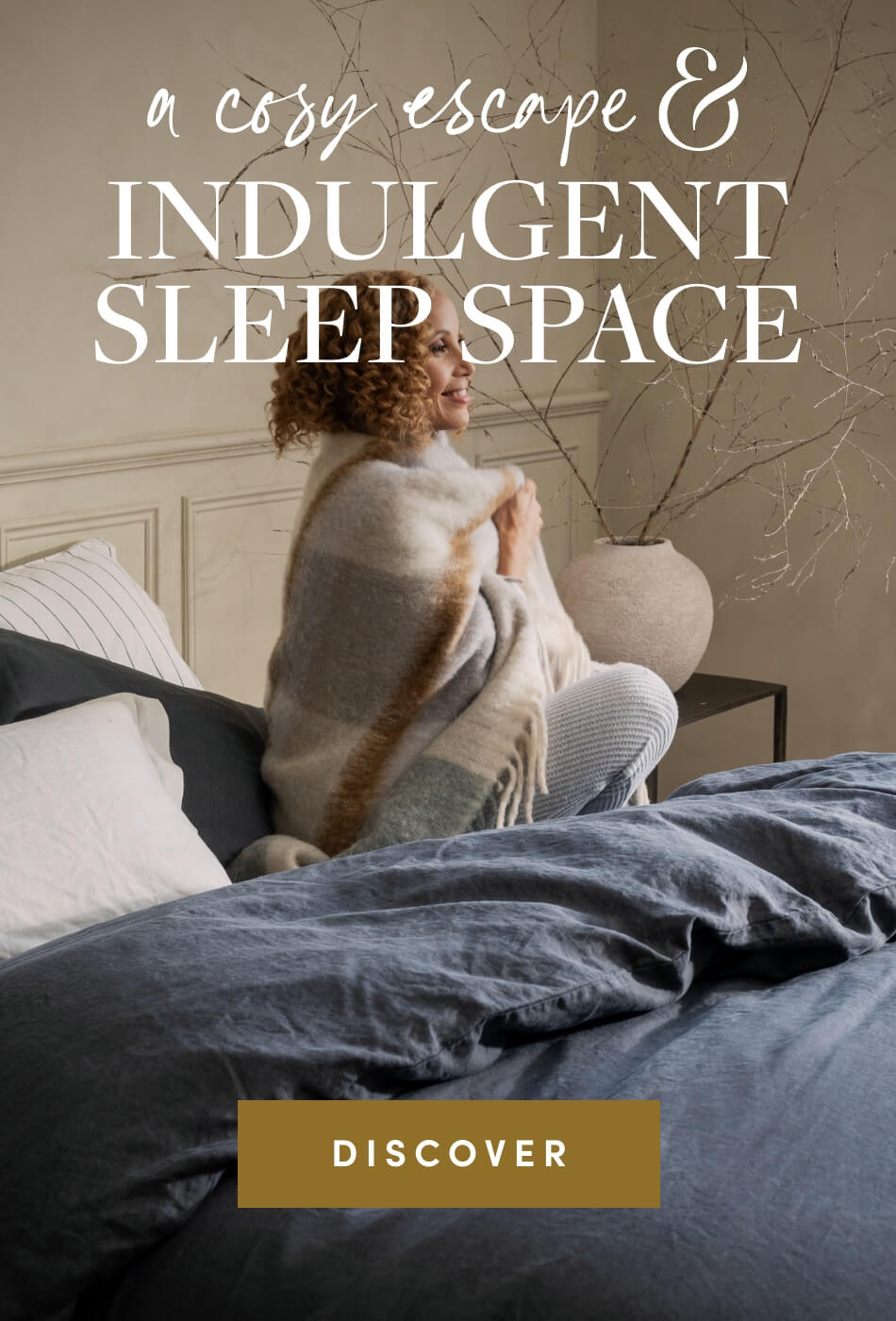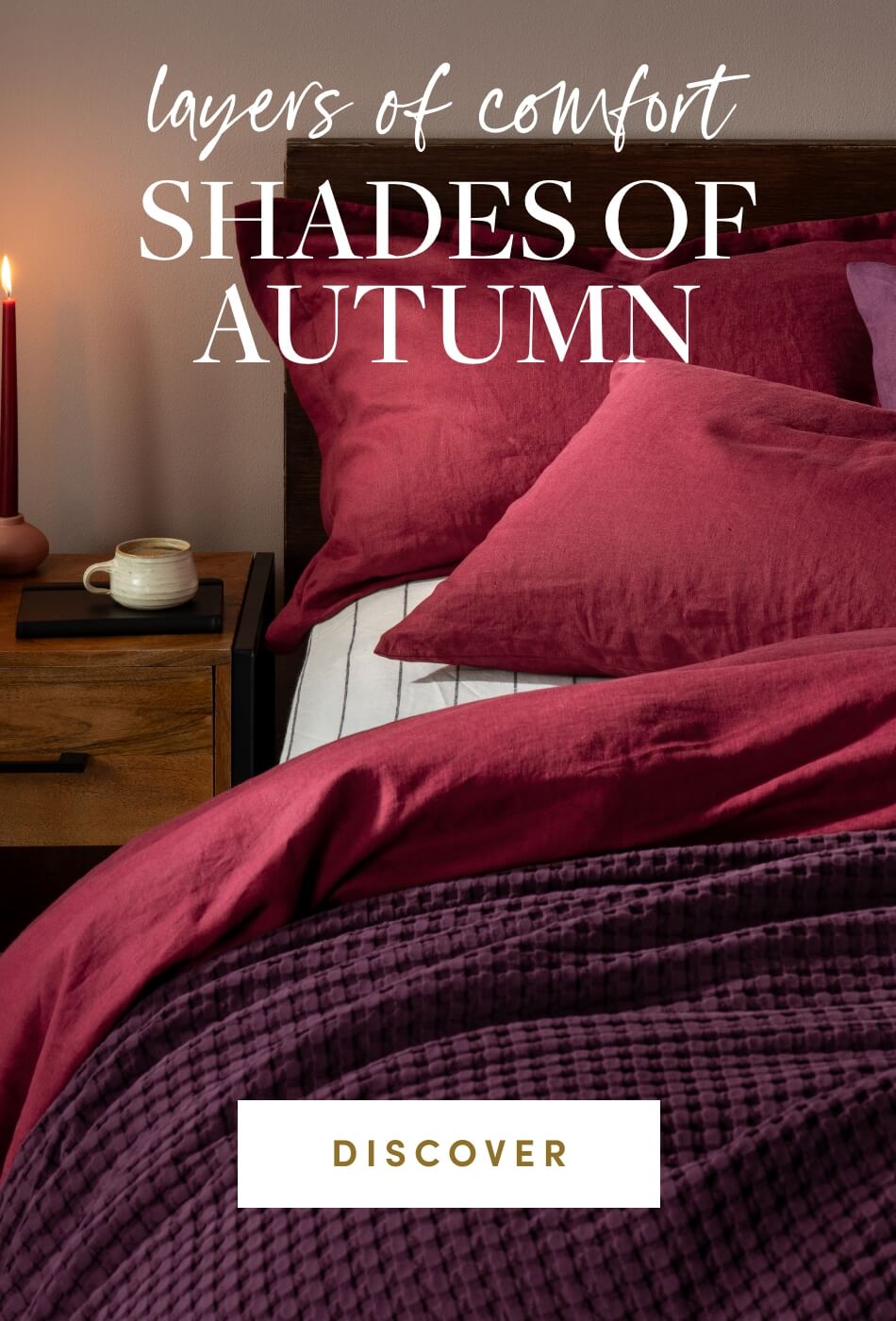Towel Buying Guide

Search for luxury with our great range of towels. Why Soak with anything less? Here you’ll find everything you need to know about towels terms, and help make the decision as to which GSM or range you need hung up in your bathroom.
The thickness, weight, size and colour of a towel are personal choices, but there are several factors that contribute towards a "good" towel. Good towels are made with a fine quality yarn, and if those yarns are combed they boast softness and absorbency too. The towel should be made with a strong ground that firmly anchors the terry loops to prevent snags, and coupled with a twisted terry pile makes for a stronger towel. Choosing a towel that's Oeko-tex certified lets you know that the dyes are safe too.
Look for accreditation on the materials used; this means the fibres are traceable and certified by governing associations such as Supima or the Egyptian Cotton Association.
Absorbency
What is GSM?
GSM is an abbreviation for "grammes per square metre" and indicates how heavy a fabric is. When talking about towels, a higher GSM indicates a denser and fluffier towel that's more absorbent.
Does a higher GSM, mean a better towel? Not necessarily. A towel with a higher GSM will feel rich and luxurious and is a wonderful treat to wrap yourself up into after a bath. But the extra density in the towel adds weight and thickness and means it's slower to dry, because of the additional fibres in the fabric. Lighter GSM towels are great for packing in your bag for holidays, swimming lessons or visits to the gym as they pack down into a smaller space, feel lighter and dry more quickly.
If you have a busy family bathroom or a lack of hanging space for towels, you might prefer the faster-drying virtues of a lower GSM towel.
Which towels are the most absorbent?
A towel's absorbency is affected by three factors:
-
The weight of the towel, known as GSM (grammes per square metre). A towel with a higher GSM absorbs more water than a towel with a lower GSM.
-
The yarn that the towel is made with. A lower twist or zero twist yarn has a greater surface area and can absorb more water.
-
The fibre used to make the towel. Top quality cotton, such as Supima, is very absorbent. But no matter what towel you're using, the way you care for it will also affect its absorbency.
Never use fabric conditioner on your towel as this coats the fibres making them less absorbent and more "scratchy" over time.
Which towels are the easiest to care for?
If easy-care towels are your goal, then choose something with a lower GSM such as a towel from our Everyday Towel Bale which has a 420GSM. They're absorbent and fluffy but dry out more quickly between uses and are faster to launder.
Consider choosing a coloured towel - white towels quickly start to show up stains from makeup and skin care products, whilst a coloured towel may be more forgiving. Our Quick Dry towel range is ideal for use at the gym or in busy households, and its bright colour palette is perfect hiding dirt.
What makes a towel quick drying?
There are several things to look for if you want a faster drying towel:
-
Choose a lighter towel. A thick, heavy towel has more yarn to dry, so choose a lower GSM towel such as the towels in our Organic Cotton towels. These have a 550 GSM which is light enough to dry out quickly.
-
Choose a zero-twist towel. Because the yarn in these towels isn't twisted, water can evaporate more easily, helping the towel dry more easily but keeping it fluffy enough to feel soft on your skin.
-
Look out for Turkish or hammam-style towels. These dry in a flash and are perfect for trips to the gym or during the summer when you don't want to turn your heated towel rail or radiators on. Beach Towels are a luxurious twist on the traditional hammam towel. One side is flat-woven and the other side has traditional terry towelling. This mean's they're softer than a typical hammam towel but much faster drying than a regular terry towel; perfect for anyone who struggles to air their towel after using it.
-
Choose a towel that includes polyester in the fabric mix as this helps the towel dry more quickly. Our Quick Dry towel range is ideal for busy households and the gym.
Towel Material
What materials are used to make our towels and what are their benefits?
Our towels are made from cotton because it's soft, absorbent, durable and can be easily dyed to a range of colours. The quality of the cotton, the way the cotton is treated and the weave of the towel all affect the towel's performance.
You can choose between a range of towel options in our range, each with their particular benefits. As well as towels made from pure cotton you'll find certified Egyptian cotton, Organic Cotton and Supima cotton in our range.
What type of Egyptian cotton do we use and what are their benefits?
True Egyptian cotton is softer, stronger and more absorbent than other types of cotton due to its extra-long staple length. Its strength and softness are a result of the way this particular cotton thrives in the warm Egyptian climate and rich, well-irrigated soils.
This means that Egyptian cotton towels feel luxuriously soft and fluffy - a real treat at the end of your bath or shower. All our Egyptian cotton towels come with an authenticity label for your reassurance.
What type of Supima cotton do we use and what are their benefits?
Supima is the trademark for certified Pima cotton grown exclusively on highly controlled plantations in the US. Supremely soft and durable, Supima cotton is a guarantee of quality and purity. Known as the "cashmere of cotton's", it is grown to have incredibly long staple lengths for very high quality and durability.
Towels made with Supima cotton feel indulgently soft and are very absorbent.
What type of Organic cotton do we use and what are their benefits?
Our Organic Turkish cotton towels are sourced from 100% GOTS certified cotton. This means the use of hazardous toxic pesticides is controlled tightly to help improve the environment, working conditions and ecology. Not only that, organic cotton products use 91% less water compared to normal cotton, stabilising the soil where it grows, making it more resistant to drought. So they’re not only fluffy, absorbent and luxurious with a 550 gsm, they’re kinder to the planet.
Apart from Supima and Egyptian cotton, what other cottons are considered to be good quality?
Supima and Egyptian cotton are the superstars of the cotton world thanks to their softness, absorbency and durability. But if your budget doesn't stretch to towels made with these premium cotton, know that a towel made with pure cotton will be good quality so long as it's been made well. Cotton is grown all over the world and the way it's spun and woven into towels has a large bearing on the final quality of the towel. Our Organic Cotton towels are a great luxury range that’s kinder to the planet. Made using 100% certified organic cotton which is GOTS certified, these have a fluffy and luxury feel at 550gsm.
Which one of our towels is the heaviest?
Our heaviest towels are those made with Supima cotton. They weigh in at a luxurious 750gsm and feel soft and very fluffy.
What is the softest towel in our range?
Our softest towels are those made with Supima cotton. Thanks to the way they're made - with a low twist combed yarn that has very long staple lengths - they feel incredibly soft and fluffy.
Towel Fibres
How are the yarns in towels spun?
The yarn in your towel will have been ringspun or produced using the Open End technique.
If produced using the Open End technique, the fibres are "strung out" into threads without the use of a bobbin. This process is faster and cheaper than other spinning techniques because the fibres being turned into yarn don't need to be aligned beforehand.
Ring Spun yarn is more laborious to produce and involves more steps. The fibres need to be aligned using a process called "carding" before they are spun. Occasionally the fibres are also combed to remove short, loose or coarse fibres and to create a luxuriously smooth yarn. Ring Spinning involves twisting the fibres and results in a stronger and more durable yarn than one created using the Open End technique.
And what does all that mean for you? Ring Spun yarn is smoother and more durable, while Open End spun yarn is rougher and lower in price.
What are the benefits of a carded and combed yarn?
Carding is a general technique used in spinning yarns. It helps align the fibres so they feel smoother when spun into a yarn.
Combing is a process of aligning the fibres before spinning for a smoother, stronger yarn.Unlike carding, which is a standard technique, combing is used for a more luxurious finish.Combing positions the fibres so that they face the same direction and removes shorter fibres. As well as a smoother, finer texture, products made with combed yarns will suffer with less fibre shedding because most of the loose fibres will have been removed during production.
Does the type of yarn affect the quality of the towel?
Yes. The yarns used to make towels can vary a lot. The way the yarn is made affects the final quality - combed yarns are smoother than uncombed yarns, whereas yarns that are open-ended and have not been combed will feel less smooth.
The fibre used to create the yarn will affect the towel's quality; yarns made with longer fibres, such as from Egyptian cotton or Supima create a towel that's softer, more absorbent and more durable. Yarn quality will also affect factors such as shedding - combed yarns have had most of the loose strands removed already so will shed less and last longer.
Why are there loops & twists in my towel? What do they do?
The loops are part of the "terry" pile and are what helps make a towel so absorbent by "scooping" up the water. These little loops also help the towel to dry more easily after you've used it thanks to the way in which they increase the surface area of the fabric.
The twists in the yarn of a towel help make it stronger. Twists help prevent snags and pulls from jewellery and also make the towel feel denser and more textured.
What does a double yarn do for a towel?
Doubling up the yarn in a towel's weave is something that's quite common in other countries but less usual here in the UK where we tend to prefer the texture of towels made with single yarns. Double yarns increase a towel's absorbency as they increase the surface area per square inch. The extra yarn means a towel with a denser, more even pile.


